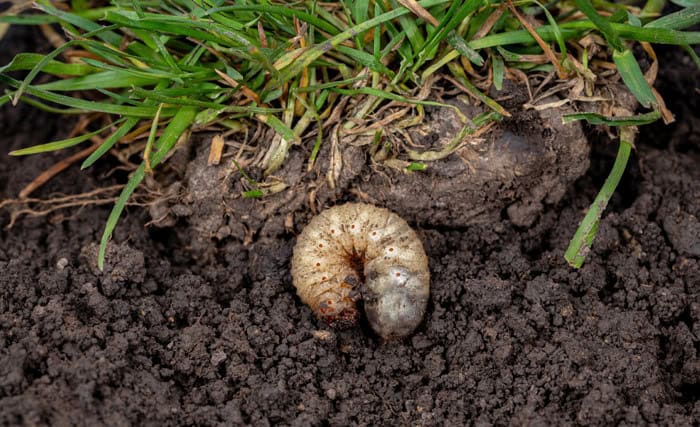
Lawn Care 101: Grub Prevention and Control
Grubs, also known as white grubs or lawn grubs, are the larvae of beetles. Whereas maggots eventually develop into flies and caterpillars to butterflies, grubs eventually make the transition into their final, beetle form. The exact type of beetle depends on the type of grub, but the ones that pose the most threat to lawns in the U.S. include the chafer beetle and the Japanese Beetle.
What are Grubs?
Usually no longer than an inch, grubs have an off-white body that features a brown head and six individual legs. When threatened, grubs usually curl their body into the shape of the letter C. They are most prevalent during the spring and fall months, especially in areas of moist soil or immediately following heavy rainfall. If left unchecked, they can cause significant damage to your lawn as well as some plants, flowers, shrubs, and even trees.
Common Signs of Grub Infestation
While most healthy lawns can withstand a few grubs here and there, finding 10 or more grubs per square foot is a key indicator of a significant grub infestation. There are some other telltale signs, too.
Sporadic Patches of Dead Grass
One of the most obvious signs of a grub infestation, these brown or yellow patches tend to resemble drought-stricken grass. If the spots appear during the rainy season, or if the majority of your lawn is healthy and vibrant, you may have an issue with grubs.
Wildlife Feeding on Your Lawn
Various animals and insects all like to feed on grubs, and they’re not afraid to dig through your lawn to reach them. As expected, this causes even more damage to your grass and soil. If you notice your lawn is plagued by an overabundance of moles, skunks, birds, or moths, especially in the late summer months, you may have a grub infestation.
Springy or Spongy Soil
Large-scale grub infestations can cause your soil to feel springy or spongy. This occurs because the grubs within the soil feed on the root systems of grass, plants, trees, and shrubs. As such, the infected soil quickly loses its density and starts to feel different from the remaining, non-infected areas.
Preventing Grubs
A little bit of preparation can go a long way in protecting your lawn and soil from grubs and other insects. Some common tactics include:
- Fertilizing and mulching your lawn frequently
- Aerating soil on a regularly basis
- Water your lawn sparingly, but make sure to completely soak the soil underneath
- Maintaining a grass length of at least two inches
Grubs like compact soil and short grass. Making conditions as bad as possible for them is the key to preventing grub infestations in the first place.
Controlling Grubs
If you can’t prevent them, your only alternative is to try and control the grub infestation from spreading. There are several strategies you can take when trying to eliminate grubs from your lawn and soil, including:
- Nematodes, which are small worms, can be used to feed on the grubs themselves
- Various chemical treatments, including imidacloprid, carbaryl, and halofenozide
When trying to prevent grubs with chemical treatments, it’s best to take action in July or August. Catching them as they hatch – but before they begin feeding – is the key to eradicating the pest from your lawn. Moreover, many of the treatments used for grub-infested lawns are not recommended for use in gardens. In cases where your gardens are infested, experts suggest regularly tilling your soil, rotating your crops, and handpicking fruits and vegetables.
Keeping Your Lawn Free of Grubs
Like with most pests, prevention is your best defense against grubs. Once they’re established in your soil, it can be difficult to remove them with any method other than chemical pesticide. For best results, make sure to water your lawn after applying the pesticide, as this will help the pesticide penetrate the surface layer and reach the soil beneath.
If at any time you feel unable to deal with grubs or any issues regarding your lawn, you may want to consider help from trained Lawn Care Service Pros near you.
